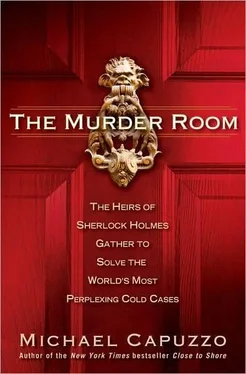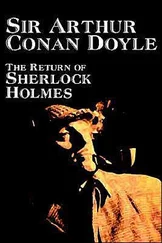Leschorn was in his fifties, tall and graying, a spit-and-polish lawman in an expensive suit and tie. He took them into an airport restaurant and chose a table in a back corner. After the waitress disappeared with their order, he leaned toward Bender and lowered his voice to describe the case while the deputies kept a watchful eye on the door. Leschorn said they were looking for Alphonse “Allie Boy” Persico, the underboss of the Colombo crime family in New York City. Persico, fifty-seven, had been groomed to be the godfather of one of the five major American crime families, along with his even more notorious brother, Carmine “The Snake” Persico. The Persico brothers had come up through the ranks as feared enforcers for the Colombo family. The titular heirs to the late, legendary godfather Joseph Colombo, the Persico boys had trouble staying out of jail. Allie Boy had served sixteen years for murder in Sing Sing, the maximum-security prison in Ossining, New York -allegedly taking the rap for his brother. After his conviction in 1980 for extortion and loan sharking, he jumped a $250,000 bail and went into hiding rather than face twenty more years in jail. He’d been on the lam for seven years.
The high-profile Persico had been so elusive a fugitive the FBI decided to wash its hands of the case and had recently pushed it over to the marshals. After spending a fortune on a worldwide manhunt following a trail of fake identifications and aliases, the bureau didn’t even know if the mafioso was still alive. “The last seven years basically we have been getting anonymous tips,” a federal spokesman said. “They were taking us all over the world-tips that he was in Honolulu, Japan, Miami, South America. They were numerous but they never panned out.”
Leschorn emphasized the need for secrecy and speed. Even among the marshals, Persico had attained the status of He Who Must Not Be Named. Deputies could refer to him only by a code name.
“This is a top priority for the service,” he said. “We’re putting a lot of resources into this.”
Bender smiled to himself. He knew the marshals liked to show up the FBI on big cases to affirm their reputation as the world’s best bounty hunters. They saw themselves as the true hard-nosed federal lawmen, little known compared to their more glamorous, pretentious federal brethren.
Leschorn pushed two small prison photographs of Persico across the table to Bender. The three-by-five head shots showed the mobster in profile and also looking straight out of the photograph. They were nearly twelve years old. Like for Vorhauer and Nauss, current photographic evidence was nonexistent.
“What happened to his face?” Bender asked. The whole left side of his face below the eye looked like he’d slept on a pillow of pebbles and nails, leaving permanent scars. Trailing the swath of scars, part of his lower lip was dark blue.
“He got in a fight in Sing Sing and someone threw acid in his face,” Leschorn said.
Whether he’d had plastic surgery since then nobody knew.
“This isn’t much,” Bender said.
“Are you willing to do it?” Leschorn wanted a finished bust in ten days.
Bender would need the same unlikely combination of art, science, and divination known as “age progression” that had nabbed Vorhauer and was stymieing him with Nauss.
“Absolutely.” He grinned, with the shiny, drunken look he had when reality exceeded his need for stimulation. He wasn’t happy unless the impossible odds against him held a tiny chance he could be a hero. “I need to find out everything I can about him.”
The feds knew little. In the twelve-year-old photos, Persico was a lean, forty-five-year-old man who fancied himself a playboy, dark-haired and olive-complected with a dark mustache. He was a heavy smoker and drinker, and preferred Scotch. He was married, but had many other women.
His longtime girlfriend was Mary Bari, a stunning five-foot-two brunette he met when she was fifteen and he was pushing forty. In the glamorous heyday of the New York mob, he showered her with diamonds, furs, trips to Vegas, nights on the town in the white Rolls-Royce with pistol-packing bodyguard. In 1984, while away from her in hiding, he arranged for her to work as a cocktail waitress at the wiseguys’ Wimpy Boys Social Club in Brooklyn so she could make a little money and hang out with the family.
She arrived at the club for the interview dressed like a gang-land knockout in pearls, tank top, high heels, and a snakeskin belt, and was warmly embraced by longtime pal Greg Scarpa Jr., son of the capo. Scarpa held her tight as his father, Greg “The Grim Reaper” Scarpa Sr., came up for a kiss. Instead he pulled a gun and put three bullets in her head. They dumped Mary on the street two blocks away. She had been rumored to be talking to the FBI about Persico’s hideout.
“Jesus,” Bender said later when he heard the story. “This guy makes Vorhauer look like a gentleman.”
The marshals believed Persico was alive and living in Florida or Connecticut, popular mob hideouts.
As Bender worked on the bust, the marshals shuttled him between Philadelphia and New York, the base of the Persico operation, on a plane with the tightest security. Deputies prevented security or even the pilot from inspecting the fiberglass box seat-belted next to Bender. Bender finished in ten days, depicting the aging mafioso with a shrunken face beneath dyed dark hair and mustache. An ex-mobster in the witness protection program who’d seen Persico in recent years previewed the bust for the marshals. The head looked good.
Four months later, around five o’clock on the afternoon of Monday, November 9, 1987, a marshal spoke to the landlady at a garden apartment building in West Hartford, Connecticut. It was one of 150 addresses they had to run down-150 Connecticut men, culled from a database of thousands, whose driver’s license listed a similar height, weight, and birth date to Persico’s, and whose surname ended in a vowel. A caravan of seven more marshals parked on the street, loaded with firepower.
The marshal showed the landlady the twelve-year-old photographs of Persico. She shook her head. “I don’t know who that is.” He showed her the recent photograph of Bender’s bust. “Oh, that guy lives right upstairs. John Longo. He just called me to come up and look at his stove. He’s making sauce and the stove went out. He’s not too happy about it.”
The marshal smiled. “Don’t worry, we’ll fix his stove.” The phalanx of federal agents approached the door. Persico was known to be armed and extremely dangerous, and traveled with armed bodyguards. But now he answered the door himself. The underboss was alone, fretting over his spaghetti sauce.
The deputy flashed his badge. The aging mafioso’s withered, scarred face darkened. But he gave up without a struggle. Deputies found $7,300 in cash in the apartment, which was rented by a woman not his wife. The underboss was receiving money from the mob in New York and preparing to help lead the Colombo family out of a dark hour.
Allie Boy had eluded marshals for seven years by living a drab existence. After being nearly caught at a California track, he sentenced himself to padding around his Connecticut apartment in slippers, cooking, watching TV soaps, and reading newspapers. The flashy underboss would have been “taken down a lot earlier” if he’d continued to indulge his weaknesses for the horses, straight whiskey, and “lots of broads,” a New York marshal said. Instead, said the marshal, “From what we’ve pieced together, he lived moderately and read a lot of newspapers. It does sound like jail.”
The year before, his brother had been sentenced to a hundred years in prison on racketeering charges in a massive federal case that put away eight men who ruled the American Mafia through “The Commission.” Thanks to Bender, Allie Boy would soon join them behind bars.
Читать дальше












